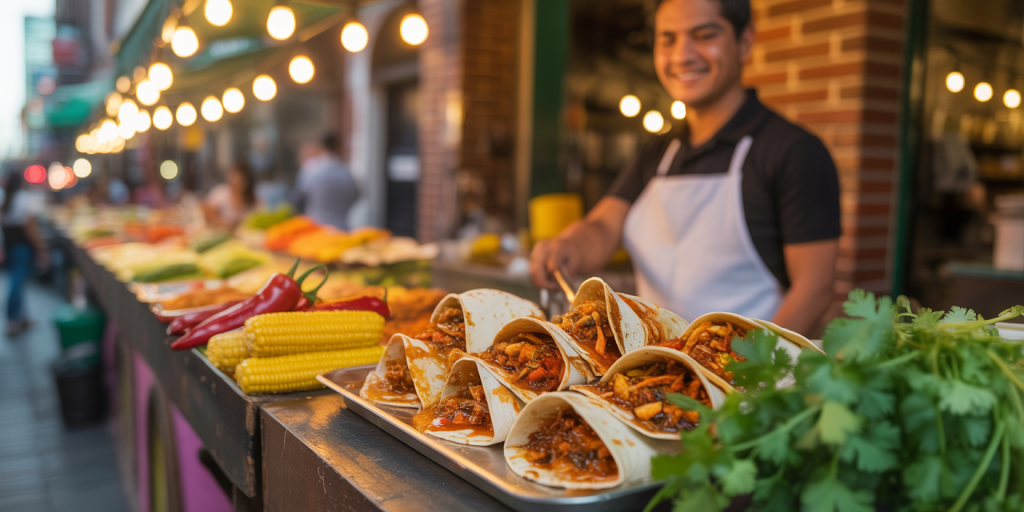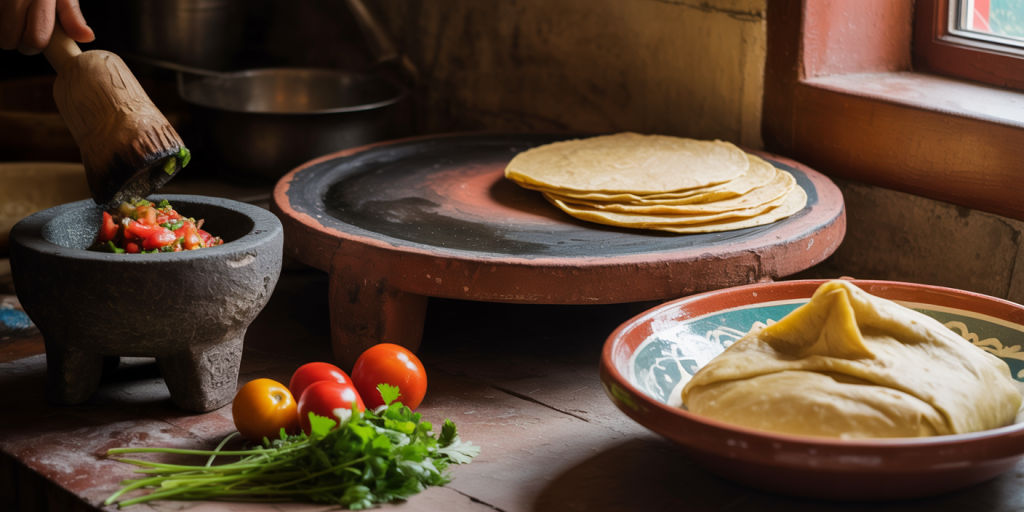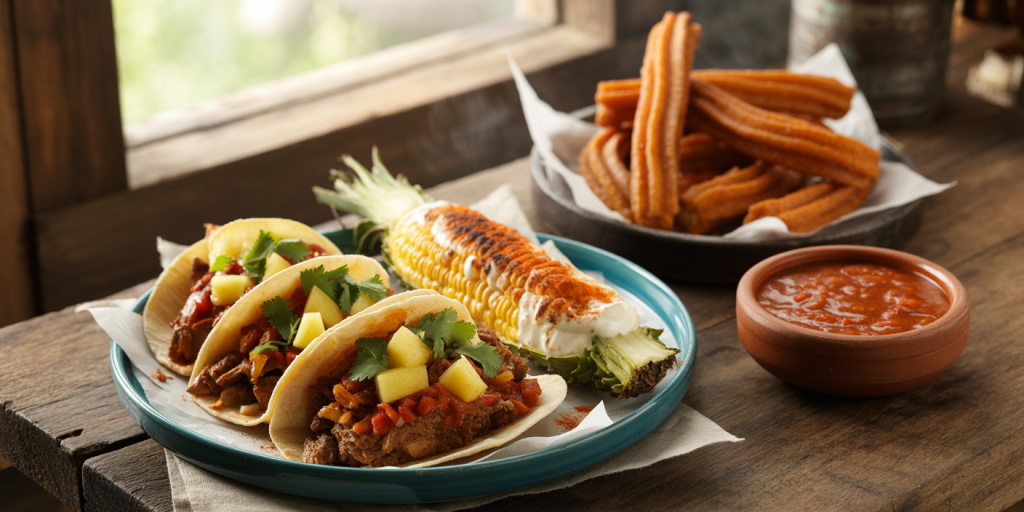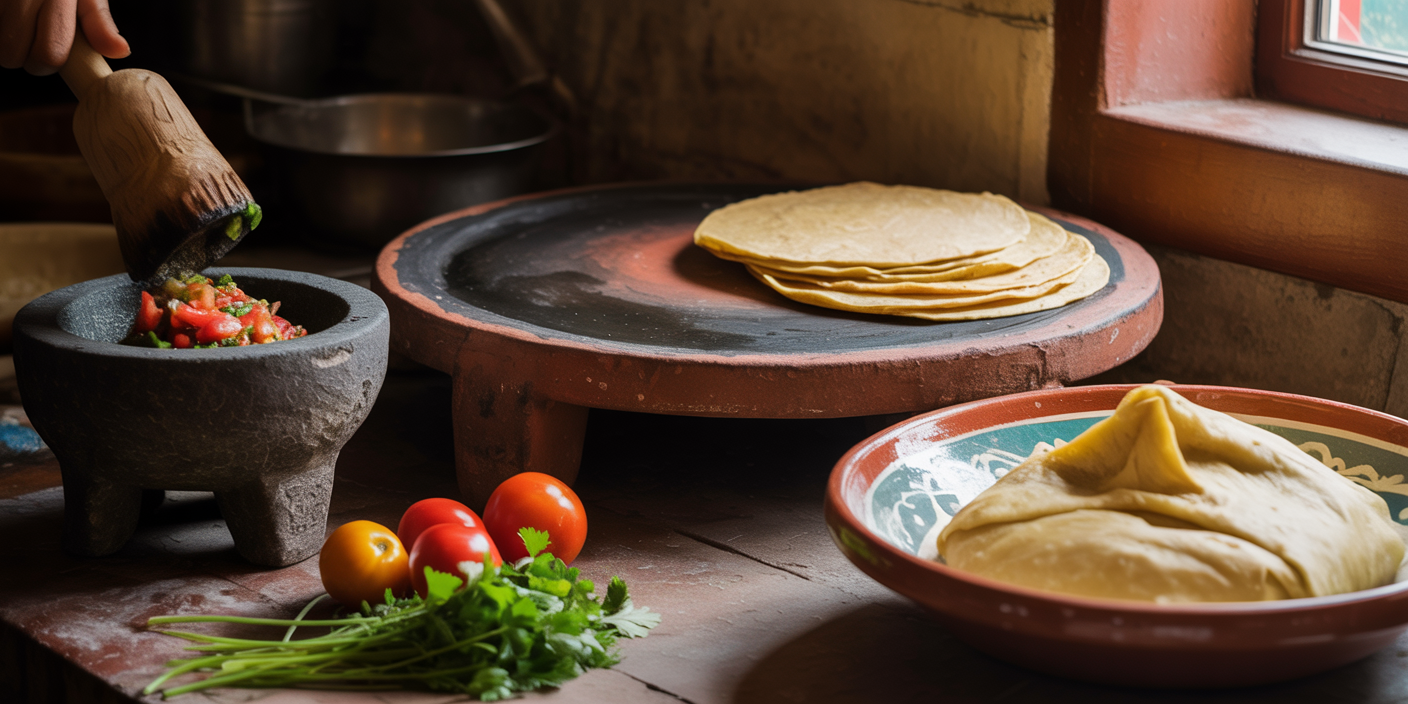Mexican street food is a vibrant, flavorful, and integral part of Mexico’s culinary culture. These dishes, often sold by vendors on bustling city streets, capture the essence of Mexico’s rich heritage, combining indigenous ingredients with Spanish influences. Today, Mexican street food transcends geographical boundaries, inspiring home cooks globally to recreate these authentic flavors in their own kitchens. Understanding the origins, ingredients, and cooking techniques can help you bring these tasty dishes to life at home.
From savory tacos to sweet treats like churros, Mexican street food offers a diverse and exciting palette. This article explores several iconic recipes, provides practical tips, and highlights how home cooks can adjust these dishes to fit their taste preferences while preserving authenticity. Whether you are a novice or an experienced cook, these recipes will help you experience and share the magic of Mexico’s street food culture.
The Significance of Mexican Street Food in Culinary Culture
When exploring Mexican gastronomy, street food holds a significant place due to its accessibility and rich traditions. According to the Food and Agriculture Organization (FAO), nearly 60% of Mexico’s population regularly consumes street food, reflecting its deep-rooted presence in everyday life. Street vendors often serve regional specialties, making street food an excellent window into local culture and history.
Many Mexican street foods originate from indigenous Mesoamerican civilizations, using staple ingredients such as corn, beans, chili peppers, and squash. These dishes evolved through centuries of cultural fusion, adding spices, meats, and cooking methods introduced during Spanish colonization. Dishes such as tacos, tamales, and elote (grilled corn) offer not only satisfying meals but also historical narratives and community connections.

Essential Ingredients and Tools for Authentic Mexican Street Food
To replicate Mexican street food authentically, understanding the base ingredients and traditional tools is crucial. Corn, or *maize*, is the foundation of many recipes. Masa harina (corn flour treated with lime) is used for making tortillas and tamales. Fresh chili varieties, including jalapeños, serranos, and chipotles, provide the iconic heat. Other essential items include fresh herbs like cilantro, lime, onions, and various salsas.
Kitchen tools, while adaptable, also influence the authenticity of the final dish. A *comal* — a flat griddle traditionally made from clay or cast iron — is ideal for roasting tortillas, grilling meats, and toasting spices. Molcajetes (mortar and pestle) are used to prepare traditional salsas, preserving the fresh flavor and texture of ingredients. However, home cooks can substitute these with cast-iron pans and food processors without significantly compromising taste.

Here is a comparative table of traditional and modern kitchen tools for Mexican street food preparation:
| Traditional Tools | Modern Substitutes | Impact on Flavor/Experience |
|---|---|---|
| Comal (clay griddle) | Cast-iron skillet | Cast iron retains heat well, but clay imparts slight smoky flavor |
| Molcajete (stone mortar) | Food processor | Processors are faster but lack rustic texture and flavor fusion |
| Tortilla press | Rolling pin or hands | Press provides uniform thickness enhancing cooking consistency |
Understanding these distinctions allows you to balance practicality with authenticity in your home kitchen.
Popular Mexican Street Food Recipes to Recreate
Tacos al Pastor: The Quintessential Mexican Icon
Tacos al Pastor is arguably Mexico City’s most famous street food. Derived from Lebanese shawarma, it involves marinated pork cooked on a vertical rotisserie (*trompo*) and served on soft corn tortillas topped with pineapple, onions, and cilantro. While replicating a *trompo* at home is challenging, you can achieve similar results by marinating pork shoulder in a blend of achiote paste, chili powder, pineapple juice, garlic, and vinegar, then roasting or grilling it.

For an authentic flavor, use finely chopped fresh pineapple as a garnish. The acidity from pineapple balances the savory spiced meat while adding a refreshing element. In a home setting, corn tortillas can be warmed in a hot cast-iron skillet or on a comal. Serve with a side of salsa verde or roja to cater to varying spice preferences.
Elote: Grilled Mexican Street Corn
Elote is a street favorite throughout Mexico, especially in summer months. It is traditionally grilled corn on the cob slathered with mayonnaise, Mexican crema, crumbled cotija cheese, chili powder, and lime juice. The combination of smoky, creamy, tangy, and spicy flavors creates a uniquely satisfying snack.
To replicate elote indoors, grill corn directly over a stovetop flame or in the oven on a broiler setting until lightly charred. Spread the creamy mixture evenly and sprinkle with cheese and chili powder. Mexican crema is similar to sour cream but thinner and less tangy; if unavailable, a mix of regular sour cream and heavy cream can substitute.
Tamales: Traditional Corn Dough Bundles
Tamales are made from masa dough filled with various ingredients such as meats, cheese, or vegetables, wrapped in corn husks, and steamed. Originating from pre-Hispanic times, tamales are versatile and can be savory or sweet.
Preparing tamales is time-intensive but rewarding. The key lies in achieving the perfect masa dough consistency—moist yet firm enough to hold together. Common fillings include shredded chicken in red chili sauce, pork in green salsa, or beans and cheese for vegetarian options. Steaming usually takes about 1.5 to 2 hours, and tamales can be stored refrigerated or frozen for convenience.
Some modern variations incorporate banana leaves instead of corn husks, a practice common in southern Mexico, imparting subtle flavors and altering texture. Making tamales at home can become a communal or family event, reflecting traditional preparation involving multiple hands.
Churros: Sweet Treats from the Streets
Churros, long fried dough pastries sprinkled with sugar and cinnamon, are a popular street dessert throughout Mexico. Originating from Spain, churros blend European influence with local preferences.
The batter is simple, consisting of water, flour, and salt, though adding a bit of butter improves texture and taste. After frying, churros are traditionally dusted with a mix of granulated sugar and ground cinnamon and served with a side of thick Mexican hot chocolate or caramel sauce (*cajeta*).
Making churros at home requires a frying pan or deep fryer and a piping bag fitted with a star nozzle to achieve the ridged texture. Homemade churros taste superior to many pre-packaged varieties and offer scope for experimenting with flavors—adding fillings such as dulce de leche or chocolate is an increasingly popular twist.
Health and Nutritional Aspects of Mexican Street Food
Mexican street food tends to be perceived as indulgent and heavy; however, numerous dishes can be healthy when prepared thoughtfully. Fresh ingredients like corn, tomatoes, and cilantro provide vitamins and antioxidants, while the use of leaner meats and controlled portion sizes can balance caloric intake.
According to the National Institute of Public Health in Mexico, traditional corn-based foods like tortillas and tamales are good sources of dietary fiber and essential nutrients such as niacin and magnesium. Additionally, many street foods rely on grilling rather than deep-frying, preserving nutrient content.
When recreating recipes at home, consider reducing the use of heavy creams or deep-frying oil. For example, baked versions of churros or roasted elote can decrease fat content without sacrificing flavor. Incorporating homemade salsas rich in peppers and tomatoes adds vitamins A and C, enhancing the meal’s nutritional value.
Future Perspectives: The Evolution and Global Impact of Mexican Street Food
Mexican street food is continually evolving due to globalization and fusion culinary trends, yet it retains its authenticity and cultural value. International cities now host food trucks and pop-up stalls dedicated to Mexican street fare, introducing these flavors to diverse audiences and adapting recipes to local tastes and ingredients.
Home cooks contribute to this evolution by experimenting with new ingredients, adjusting spice levels, and innovating presentation styles. For example, vegan and gluten-free versions of traditional recipes, including jackfruit tacos or masa-based gluten-free tamales, are gaining popularity.
The Mexican government, recognizing street food’s cultural significance and economic role, has initiated programs to promote food hygiene and sustainability among street vendors, ensuring the longevity and safety of these traditions.
From a culinary tourism perspective, Mexican street food offers an immersive experience attracting millions annually, particularly in cities like Oaxaca, Guadalajara, and Mexico City. As the demand grows, educational initiatives and cooking workshops are expanding internationally, allowing enthusiasts to develop authentic skills.
In conclusion, Mexican street food recipes brought into the home kitchen not only satisfy palates but also promote cultural appreciation, nutritional awareness, and culinary creativity. By mastering traditional techniques and embracing innovation, you can keep these cherished flavors alive and vibrant for future generations.

Deixe um comentário